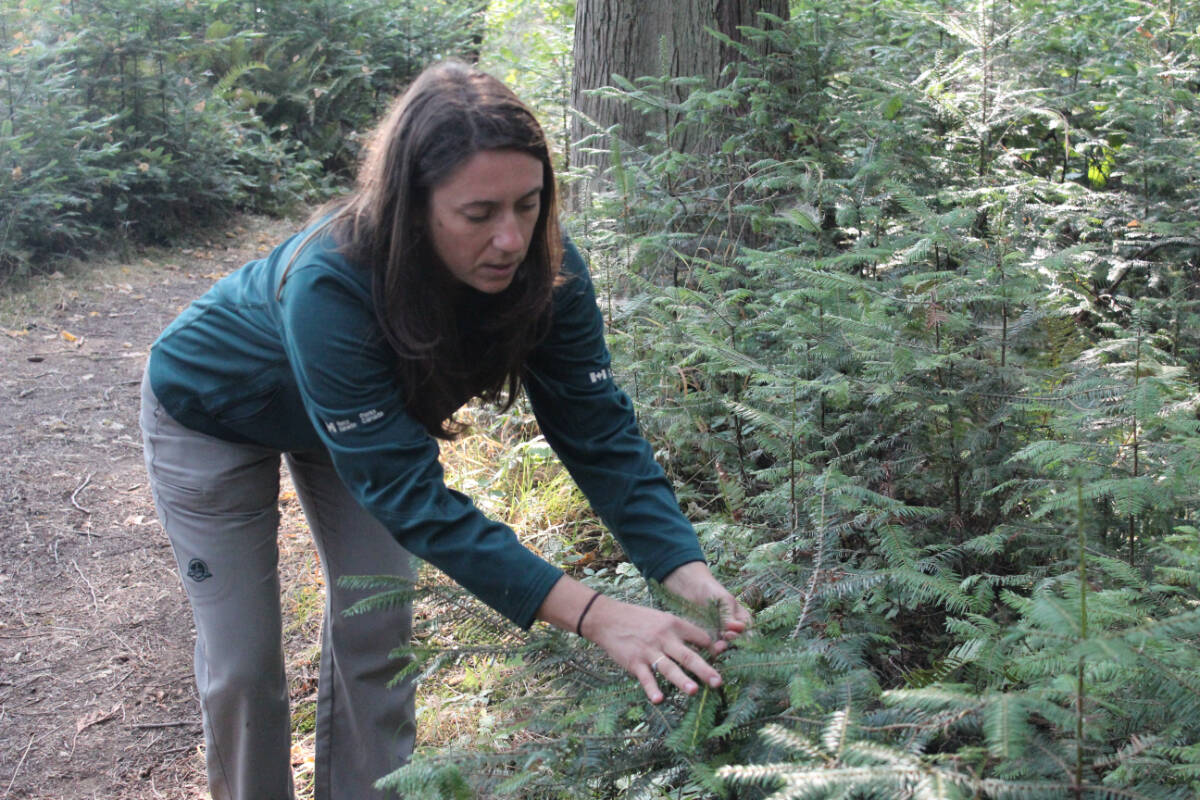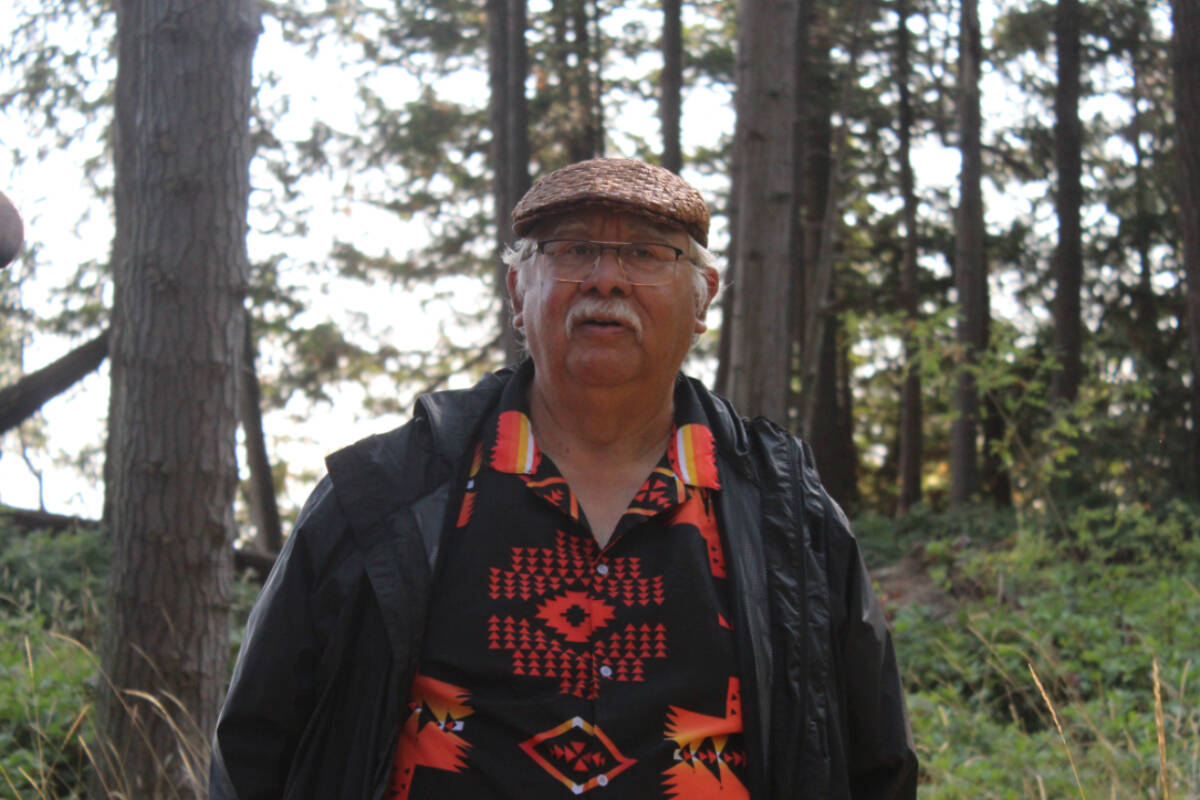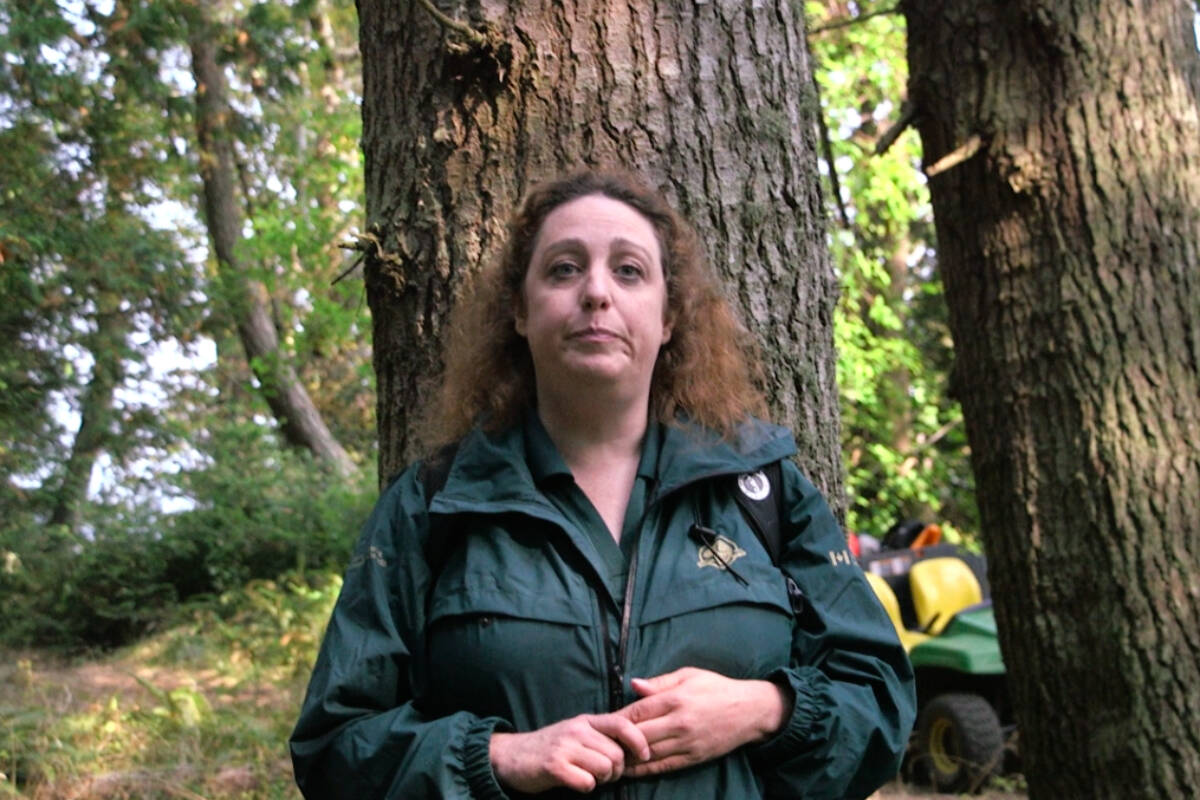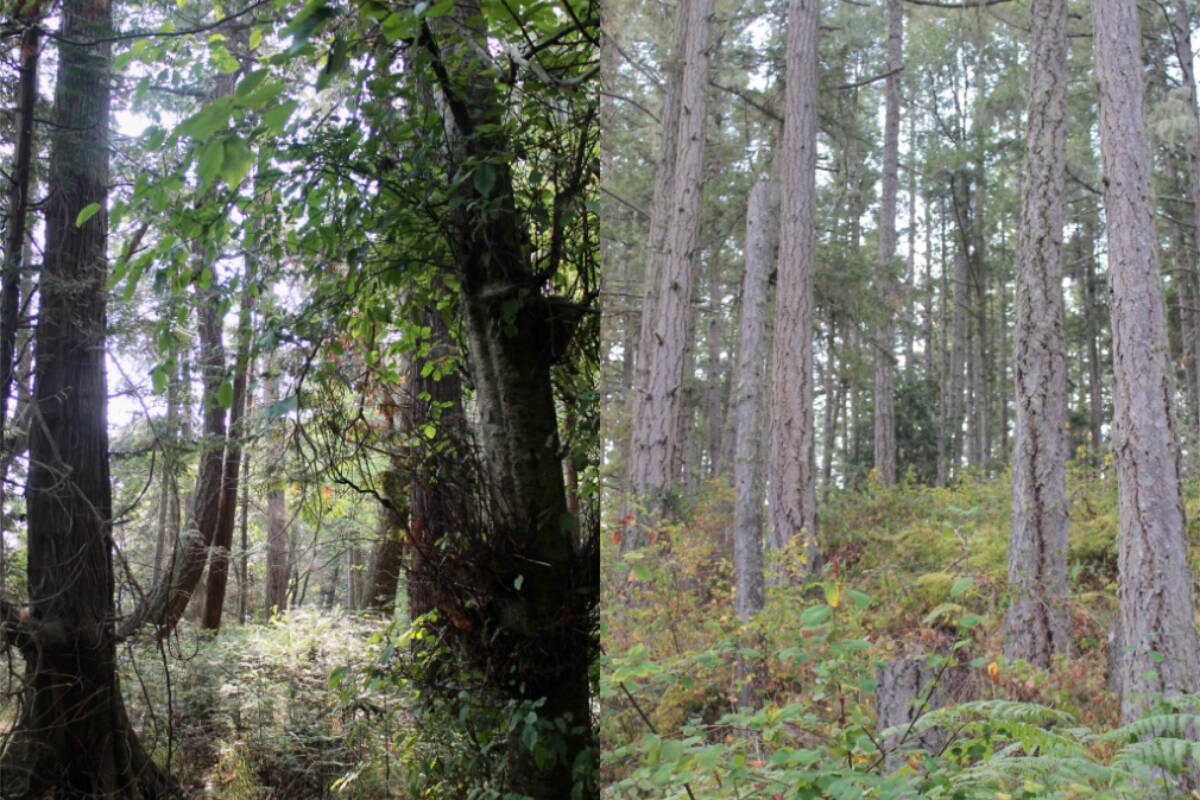This coming winter the European fallow deer population on Sidney Island will be eradicated to restore the native understory growth.
The invasive deer have impacted the island’s ecosystem by eating the diverse species of plants, including Douglas fir, western red cedar, arbutus and maple trees.
Local First Nations and Parks Canada are implementing the cull to recover the herbs and trees. The deer eradication is part of a $5.9-million contract that has produced a backlash from animal advocates.
In response, Parks Canada took media members to Sidney Island to show the impact of fallow deer.
Restoring the island’s understory is crucial to protect Sidney Island from significant wildfire impacts if one were to strike it.
According to forest ecologist Becky Miller, the grand fir makes up a majority of the forest floor seedlings.
“That variety of tree is not reflected in the young seedlings that we see in the future forest,” said Miller. “Instead, the grand fir has been established because it is the least palatable.”
According to Miller, the tree species is the least palatable for the deer due to the tree not being highly nutritious. The problem with the grand fir making up most of the young growth is that it isn’t a very fire-tolerant species.
To contrast, the dense variety of vegetation that used to occupy most of the ground on the island cannot be grown for more than a year or two before fallow deer find them, eat them and kill them before they have a chance to spread their seeds.
“We are setting ourselves up for an extremely flammable future forest,” Miller said.
For the Tsawout, Tsartlip, Tseycum nations within the WSANEC council, the island’s ecosystem is something they have relied on for decades. They hunt the native black tail deer, gather food, use the different plants on the island to make medicine and have a variety of unique reasons they depend on it.
“Salmon berries are really important, not only as a mediation plant, but a plant that tells us when the salmon are coming. So we watch for the salmon berries,” said Tsawout hereditary chief Eric Pelkey.
Although the fallow deer eradication will be beneficial to the WSANEC council and to prevent wildfires, many have their doubts about the process of the eradication.
Campaign director of Animal Alliance of Canada, Jordan Reichert, expressed his concerns about the method of eradication in a previous interview with Black Press Media.
“Instead of choosing a less ecologically divisive and more humane option, perhaps contraception or birth control, which we have suggested, shows that the priority for Parks Canada and Coastal Conversation has not been necessarily restoring the ecology of Sidney Island, but just trying to get the eradication aspect over all other concerns,” Reichert said.
ALSO READ: Plan to eradicate fallow deer population on Sidney Island faces backlash
Parks Canada staff disagree.
“A bunch of different methods were considered,” said superintendent of the Gulf Island National Park Reserve, Kate Humble. “It was really clear that the hunting that had been going on in combination with big culls over the land … have led to 15,000 fallow deer being killed on this island cumulatively. Keep in mind the current population is about 300 to 900. Clearly, it has not been sufficient to enable this understory to recover.”
Ultimately, the purpose of the project is not to have a small controlled population of fallow deer on Sidney Island, but instead to eliminate the invasive fallow deer from the island to allow the native black tail deer to recover, according to Humble.
“The decision to use a team of sharpshooters came about partly in consultation with the BC SPCA because humane methods of dispatching deer have been project partners’ number-one priority from the beginning,” she said. “Sharpshooters are gifted, skilled people, many of these people are also trained veterinarians. So this is the method that is going to allow the deer to be dispatched instantaneously as humanely as possible.”
Not only was the method picked for being the most humane option, but it will happen swiftly to cause less disruption to Sidney Island residents. It’s up to residents to decide whether they want to stay or leave during the eradication starting in December. The first half of the eradication is expected to end in March and will start back up again in December 2024. Dispatching the fallow deer won’t happen on private property, it will be on the Parks Canada side of the island.
According to Tsartlip elder Carl Olsen, after the deer are dispatched, recovery people will come in and recover the meat, bring it back to cold storage and there it will be processed. Then it will go to a proper butcher and it will be disturbed amongst the First Nations communities in the area.
Pelkey is hopeful of what’s to come on Sidney Island once the fallow deer are gone.
“To know that our ancestors are watching us and they’re really happy that the forest can be restored to what it was. They were here when they utilized this forest full time.”
ALSO READ: Sidney Island residents to vote on plan to eradicate invasive deer




